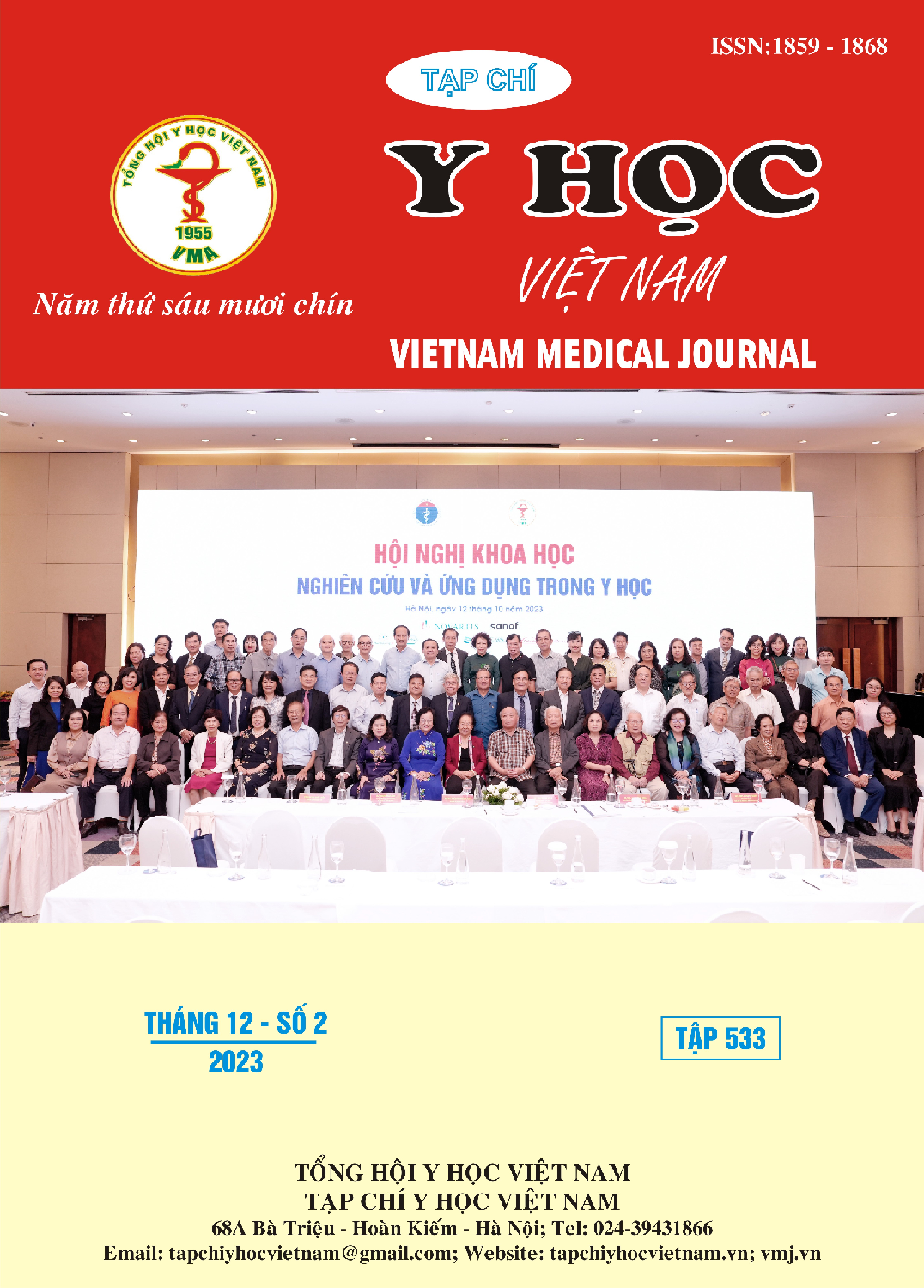CLINICAL FEATURES, COMPUTER TOMOGRAPHY IN PATIENTS WITH EXTREME CEREBRAL INHALTY DUE TO MIDDLE CEREBRAL ARTERY OBSTRUCTION AT MILITARY HOSPITAL 103
Main Article Content
Abstract
Objectives: Describe clinical characteristics and computed tomography images in patients with large-scale cerebral infarction due to middle cerebral artery occlusion at Military Hospital 103. Subjects and methods: Clinical tissue research on 32 patients with large cerebral infarction due to middle cerebral artery occlusion at Military Hospital 103 from January 2017 to September 2022. Evaluate clinical features and images on computed tomography. Results: Clinical characteristics according to the NIHSS scale showed that the majority of patients were moderate and severe (NIHSS ≥ 16), accounting for 84.4%; Consciousness status within the range of 6-12 Glasgow points (96.9%); The main common clinical symptoms include hemiplegia (100%), difficulty speaking (90.6%), ipsilateral mydriasis (78.1%); Brain computed tomography images showed extensive infarction in the blood supply area of the middle cerebral artery with 0 - 3 points according to the ASPECTS scale (78.1%). Conclusion: Patients with large-scale cerebral infarction due to middle cerebral artery occlusion have main symptoms of hemiplegia, difficulty speaking, and dilated pupils on the same side with mainly moderate and severe clinical conditions; computed tomography images show a large infarct area.
Article Details
References
2. S. Das, p. Mitchell, n. Ross, et al. (2019). Decompressive hemicraniectomy in the treatment of malignant middle cerebral artery infarction: a meta-analysis. World neurosurg, 123: 8-16.
3. Eric jüttler, andreas unterberg, johannes woitzik, et al. (2014). Hemicraniectomy in older patients with extensive middle-cerebral-artery stroke370(12): 1091-1100.
4. E. Jüttler, s. Schwab, p. Schmiedek, et al. (2007). Decompressive surgery for the treatment of malignant infarction of the middle cerebral artery (destiny): a randomized, controlled trial. Stroke, 38(9): 2518-2525.
5. B. Daou, a. P. Kent, m. Montano, et al. (2016). Decompressive hemicraniectomy: predictors of functional outcome in patients with ischemic stroke. J neurosurg, 124(6): 1773-9.
6. Ogilvy cs carter bs, candia gj, et al (1997). One year outcome after decompressive surgery for nondominaut hemispheric infarction. Neurosurgery 40 : 1168 – 1176.
7. Brossaus wc delashaw jb, kassell nf, et al (1990). Treatment of right hemispheric cerebral infarction by hemicraniectomy stroke. 21: 874 – 881.
8. Manish singh sharma amadeep kumar, et al (2013). Outcome after decompressive craniectomy in patient with dominant middle cerebral artery infarction: a preliminary report. Ann indian acad neurol. Oct-dec; 16(4): 509-515.
9. Giuseppe l desiree jl (2000). Decompressive craniectomy for space occupying supratentorial infarct: rational, indication and outcome. Neurosurg focus 8(5).
10. S. B. Jeon, s. U. Kwon, j. C. Park, et al. (2016). Reduction of midline shift following decompressive hemicraniectomy for malignant middle cerebral artery infarction. J stroke, 18(3): 328-336.


